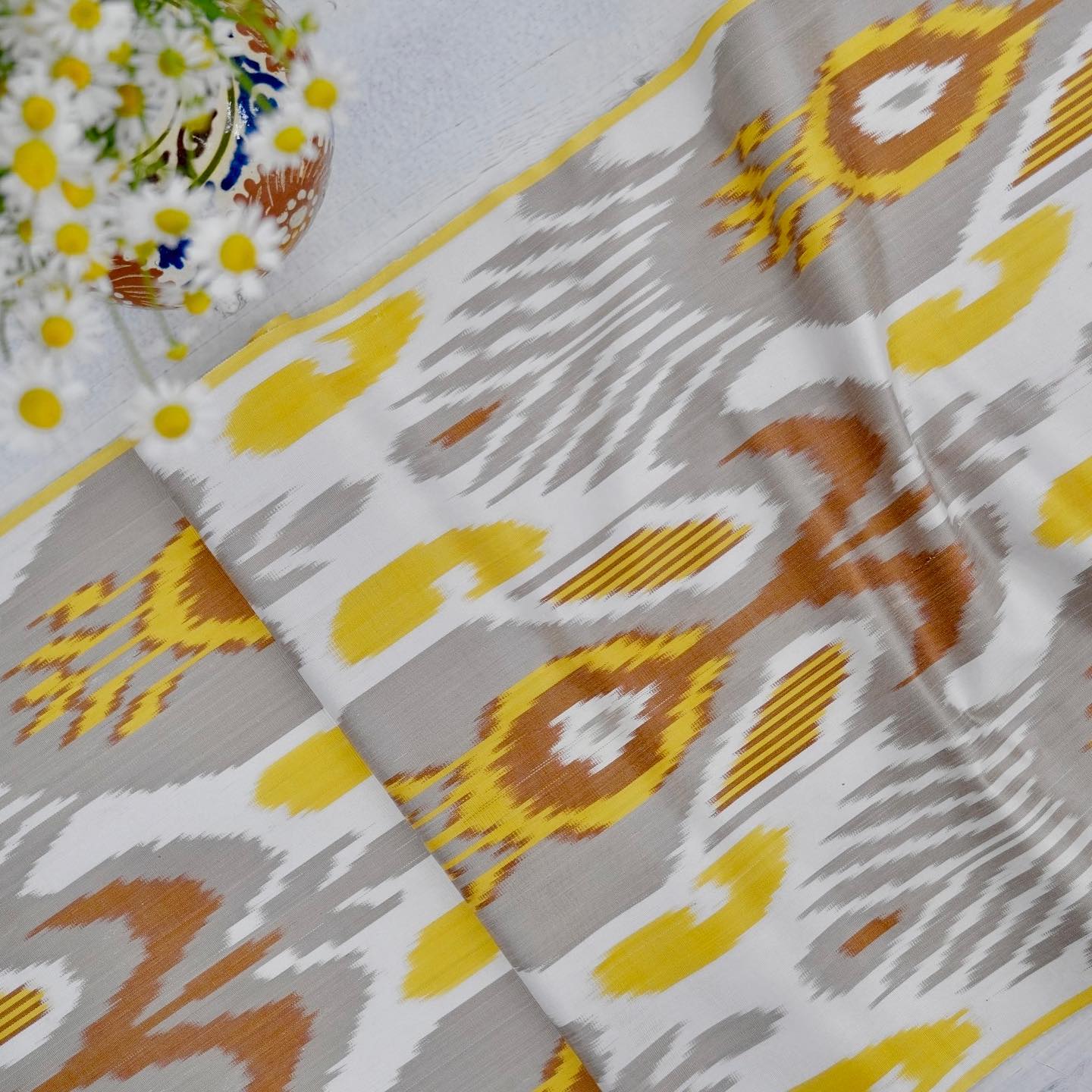Ikat fabrics are aesthetically sophisticated and have eye-catching details that are easily recognizable by their distinctive motifs and patterns.

The expression "ikat" has Malay-Indonesian roots and a rich history, often associated with Asia, particularly the Indian subcontinent (Bangladesh, Pakistan and present-day India). In English, the term ikat refers to fabrics made from yarn dyed with resin.
In addition, "ikat" is also linked to the same Japanese word etymologically. When ikat-weaving is mentioned in a Japanese context, it is said that the final form is made from yarn soaked in dye and then woven into the finished product. In contrast to durable dyeing techniques such as shibori, batik or tie-dyeing, where the fabric is dyed, in ikat dyeing the yarn is dyed.
Why Are People So Fascinated About Ikat Fabrics?
Ikat fabrics are aesthetically sophisticated and have eye-catching details that are easily recognizable by their distinctive motifs and patterns. Those with a passion for fine fabrics are aware of their value. So, when you come across stunning ikat silk products, it's natural that you can't resist. Not to mention, the ikat pattern is created using an intense and unique technique called resist dyeing.
Despite the fact that ikat fabrics are still considered a traditional manufacturing process, over the years they have become widely recognized in the fashion world, especially silk ikat.
How Are Ikat Fabrics Made?
As we explained above, the term ikat is used to describe a technique known as resist dyeing, in which the yarn is dyed directly. The yarn of the fabric is first spun and then dyed. Knitting and dyeing are complex processes that require a certain sequence. To prepare for dyeing in kasuri, the yarn must be carefully tied and stretched on the loom. In this way, the desired pattern is traced on the yarn and the part of the fabric to be dyed is wound and positioned accordingly. The yarn is then placed on the loom and weaving begins. Silk ikats are made in the same way.
The History Of Indigo Dyes
Indigo dye, formerly known as "blue gold", is a dye produced by the plant Indigofera Tinctoria. As the name suggests, this dye was originally introduced in India. Outside India, it is also found in tropical areas of Africa and China. When the British colonized the Southeast Asian subcontinent, they forced Indian farmers to grow more indigo than wheat and paid them a very low price in return. In Europe, the same indigo blue dye was sold at a much higher price, and was so expensive that it could only be offered to royalty and the nobility.
The Marketing Of Indigo Dyes
In the late 19th century, the first impulse from modern chemical companies led to a shift to synthetic dyes to replace natural indigo dyes. As natural indigo dyes were still important and in demand, large investments were made in the production of synthetic indigo dyes. After ten to twenty years, natural indigo dyes have largely replaced synthetic dyes. Today, indigo cultivation has declined sharply and is mainly concentrated in El Salvador and Brazil.
Some manufacturers still offer naturally colored blue roe or colored blue jeans. Naturally dyed jeans are a lighter blue than synthetically dyed jeans. Synthetic indigo is superior to virgin indigo in terms of purity, color saturation, cost, performance and environmental impact.
The love for the magical midnight blue and its lighter versions has not faded even 5,000 years after indigo was discovered. People still love it and wear it all the time. From dresses to sweaters, from scarves to skirts, from work trousers to blouses, indigo will never go out of fashion and will never disappear from our wardrobes.
The Use Of Indigo Dyes In Contemporary Fashion Design
Although the modern fashion world is dominated by synthetic fabrics dyed with indigo, natural indigo dyeing has recently become popular again, especially in contemporary fashion. The list of fabrics has once again been expanded to include twill blue fabrics and other traditional hand-weaving techniques. Luxury textile designers are using ikat blue fabrics to embellish their silk collections. Those who can afford more expensive brands and appreciate quality and unique beauty can enjoy naturally dyed blue ikat fabrics by the yard and eco-friendly ikat silk fabrics.
About ALESOUK
The ALESOUK was founded in March 2010. It is a rapidly growing manufacturer and retailer of crafts objects, art-decoration products and Central Asian textiles.
ALESOUK and their team are creating the antiques of the future. They are the pioneer in recreating masterpieces, combining modern style with the preservation of national craft traditions. This makes their products even more unique and special.
ALESOUK can be viewed online at https://alesouk.com/
The ALESOUK Grand Bazaar Online Shop is a registered trademark founded in March of 2010.
Jan 28, 2023